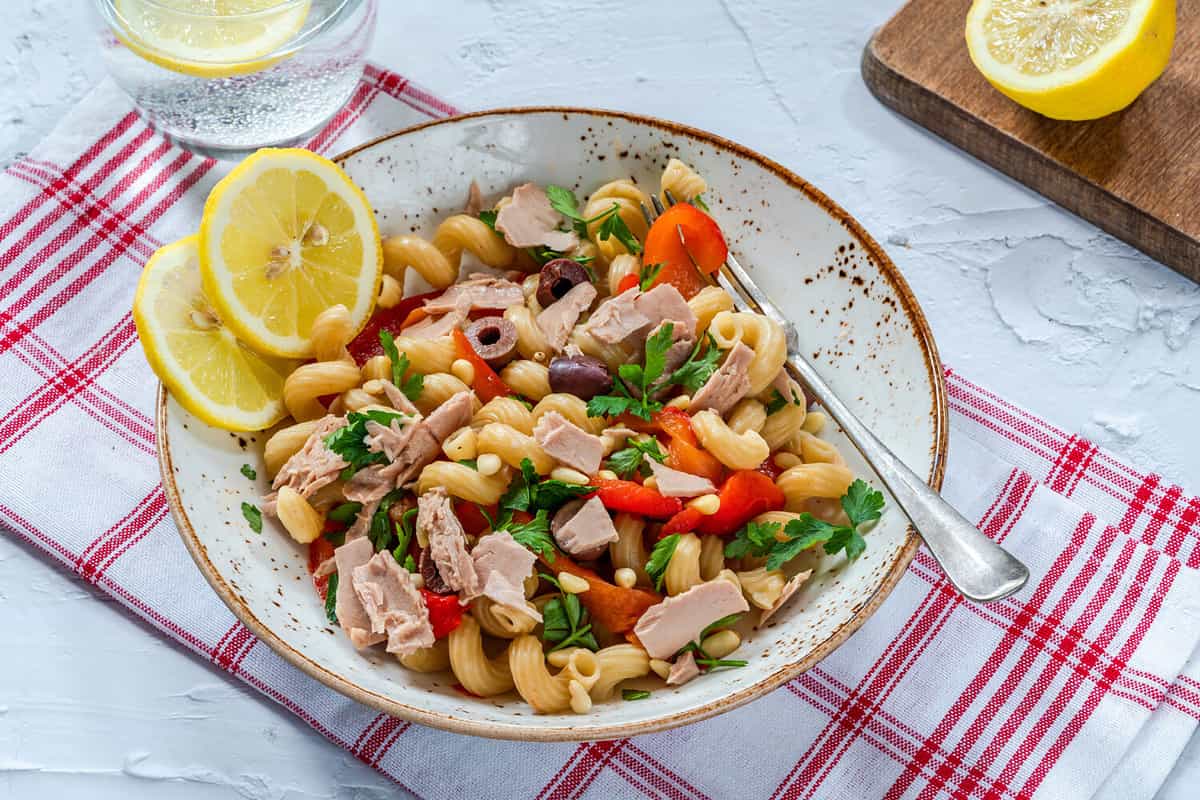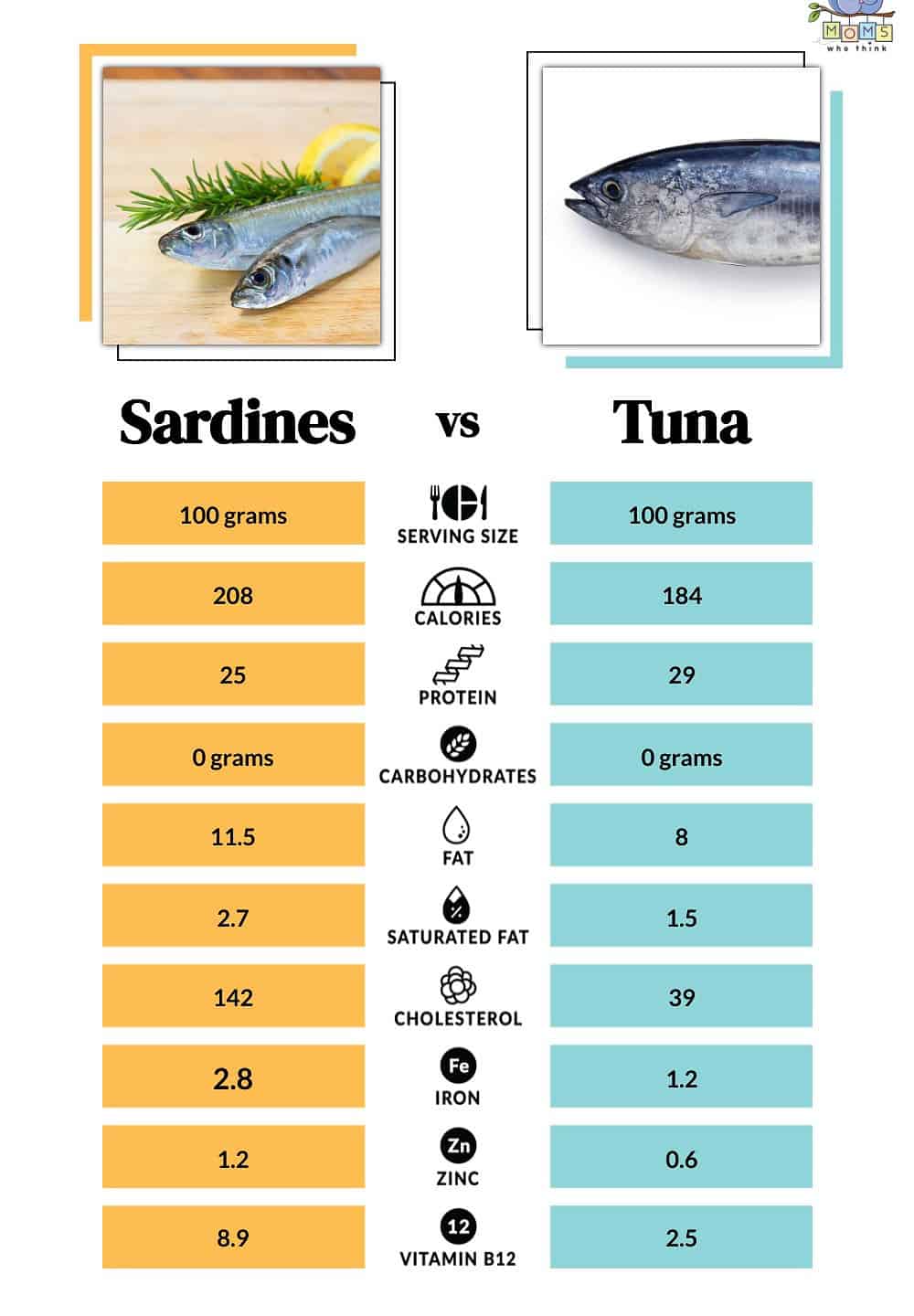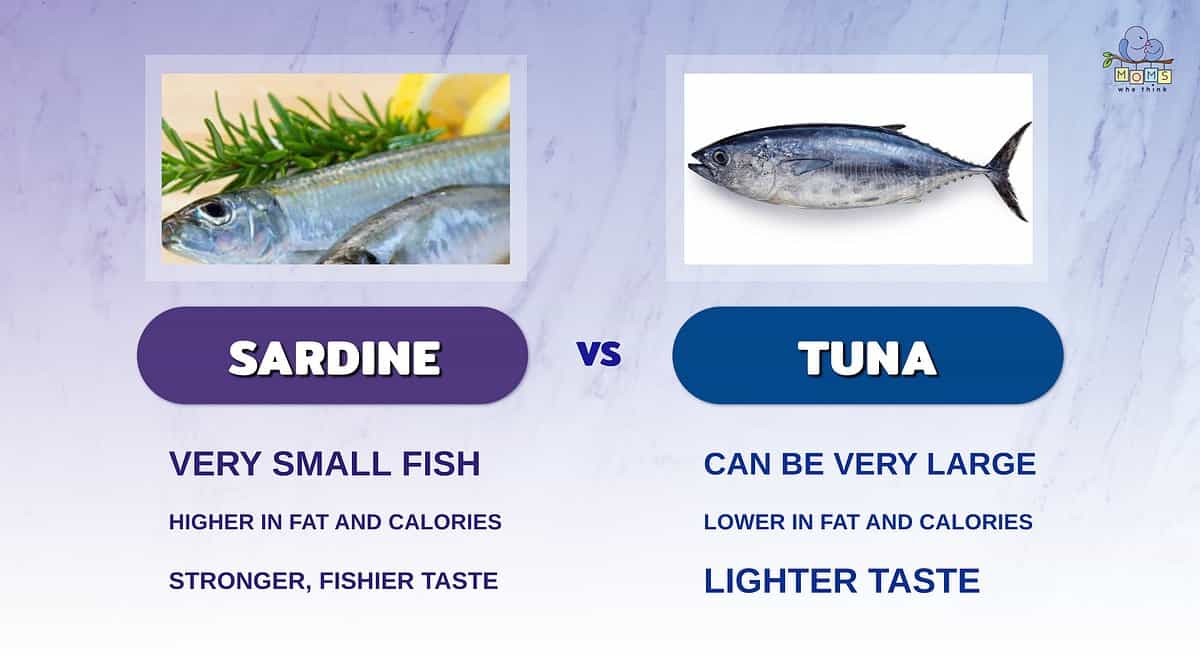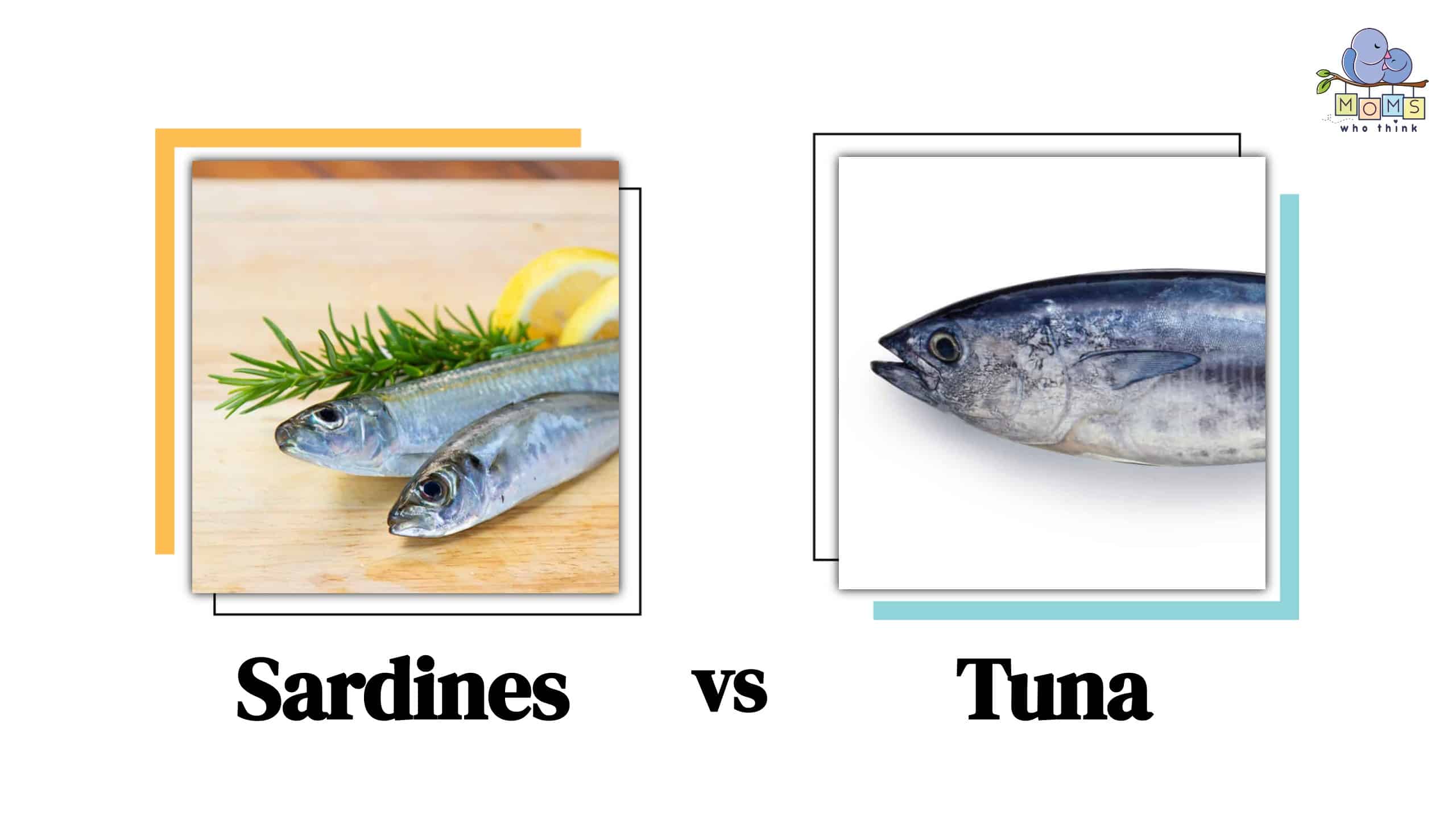If you like fish food, look no further than sardines and tuna. Aside from the fact that they are fish, sardines vs. tuna have significant differences. They each hold a lot of unique nutritional value that benefits your heart and cholesterol. They also have a distinct way of being cooked that makes for a tremendous meal.
In this guide, we’ll discover the difference between these two kinds of foods, how they can help you decide what to eat, and how they shape your overall health.
- The must-have convenient reference guide for every home cook!
- Includes more than 8,000 substitutions for ingredients, cookware, and techniques.
- Save time and money on by avoiding trips to grab that "missing" ingredient you don't really need.
What Makes Sardines and Tuna Different?

©BBA Photography/Shutterstock.com
Tuna and sardines are the most commonly eaten kind of fish. Part of that reason is because this kind of fish is the most tasteful. The flavor of tuna as well as sardines, is dense and creamy. There's no bitterness to it. Additionally, fresh tuna can taste sweet and even salty fishiness, which makes it even more attractive to eat.
The history of sardines is fascinating. They originated around the island of Sardinia, which is near the Mediterranean. That is how the name for Sardines was created. There are also over 21 kinds of sardines, some with a sweeter flavor and others with a distinct fishier flavor.
Here are some other unique facts about sardines:
- They are considered one of the smallest, silvery, elongated fishes
- They have a single short dorsal fin with no lateral line
- They also have no scales on their head
Tuna is much different than sardines when it comes to appearance and taste.
For instance, Sardines weigh from one to four ounces. However, one of the most gigantic tuna ever caught was an Atlantic bluefin weighing nearly 1,500 pounds. Tuna is also one of the most popular fishes eaten, with over $6 billion in industry. Another interesting fact about tuna is how they can swim roughly 40 miles per hour.
- They are considered one of the smallest, silvery, elongated fishes
- They have a single short dorsal fin with no lateral line
- They also have no scales on their head
Nutritional Value of Sardines vs. Tuna

©Nikiti/Shutterstock.com
Sardines and tuna both have tremendous health benefits for your overall health. For example, tuna and sardines are high in omega-3 fatty acids, which promotes a healthy heart. Additionally, omega-3 fatty acids can lower blood pressure, reduce inflammation, and decrease the risk of heart disease. In fact, studies have shown that people who eat more fish, especially sardines or tuna, can lower their risk of heart disease.
Omega-3 fatty acids are also vital to improving cognitive function, especially mood and memory. Fish high in omega-3 fatty acids help lower depression and anxiety. Tuna and sardines are also great sources of protein, which lower blood pressure and help reduce the risk of a heart attack or stroke. For more precise protein, tuna contains around 20 to 25 grams of protein per 100 grams. On the other hand, sardines contain around 22-25 grams of protein per 100 grams.
What You Can Eat With Sardines or Tuna

From pasta to chowder, you can make various meal dishes with either sardines or tuna. It ultimately comes down to your taste preference and what you enjoy eating the most. Here are some recipe ideas for either sardines or tuna that can give you ideas on what to cook.
Sardines often have a stronger flavor than tuna and can be used to add a fishier taste to recipes. Sardines are often paired with solid seasonings such as garlic, lemon, rosemary, and thyme. Here are some popular sardine meals to consider:
- Pasta with sardines
- Paleo Sardine Dip
- Brunch Bagel with Sardines
- Sardine and Olives Focaccia
- Mediterranean Sardine Spread
- Sardine sandwiches
- Sardine soup
- The must-have convenient reference guide for every home cook!
- Includes more than 8,000 substitutions for ingredients, cookware, and techniques.
- Save time and money on by avoiding trips to grab that "missing" ingredient you don't really need.
While less mild, Tuna still has a lot of flavors. It's often used for sushi and goes well with different pasta sauces and toppings. Here are the most common tuna meal choices:
- Tuna salad
- Tuna casserole
- Tuna steaks
- Tuna salad
- Grilled tuna
- Tuna sushi
They are also commonly served grilled or smoked as a standalone dish or as an ingredient in other recipes.
What’s the Better Choice?

- Sardines are famous as some of the smallest fish consumed by humans. Tuna can vary in size, with some of the largest tuna ever caught being absolutely tremendous.
- Tuna is lower in fat and calories compared to sardines, making it a better choice for those watching their diet.
- Sardines have a strong, fishy taste that some find off-putting. You may find tuna's lighter taste more palatable.
Choosing between sardines and tuna is a matter of taste. Depending on your food preferences, you can whatever you like the most. It also comes down to what you enjoy cooking or if sardines or tuna are a better complement to a particular dish.
If you're only looking at health, both sardines and tuna offer tremendous health benefits. They are similar in that they offer omega-3 fatty acids and other nutrients that improve your overall health. They are ultimately both a great source of food to eat.
Need a great tuna casserole recipe? We've got one right here for you:
Print
Tuna Casserole
- Total Time: 1 hour
Ingredients
- 2 cups macaroni
- 1 can cream of celery soup
- 1 can chicken breast
- 1 small package cream cheese
- 1/2 teaspoon garlic
- 1/2 teaspoon dry mustard
- 1/4 cup milk
- 1 small onion, chopped
- 1/4 cup seasoned bread crumbs
- 2 Tablespoons butter
Instructions
- Cook macaroni per package directions.
- In casserole dish mix cream of celery, softened cream cheese, milk until smooth.
- Add chicken breast, garlic, dry mustard and onion. Stir in cooked macaroni.
- Melt butter and mix bread crumbs into the butter. Spread mixture over top of casserole.
- Bake in 375 degree oven for 45 minutes.
- Prep Time: 15 minutes
- Cook Time: 45 minutes


